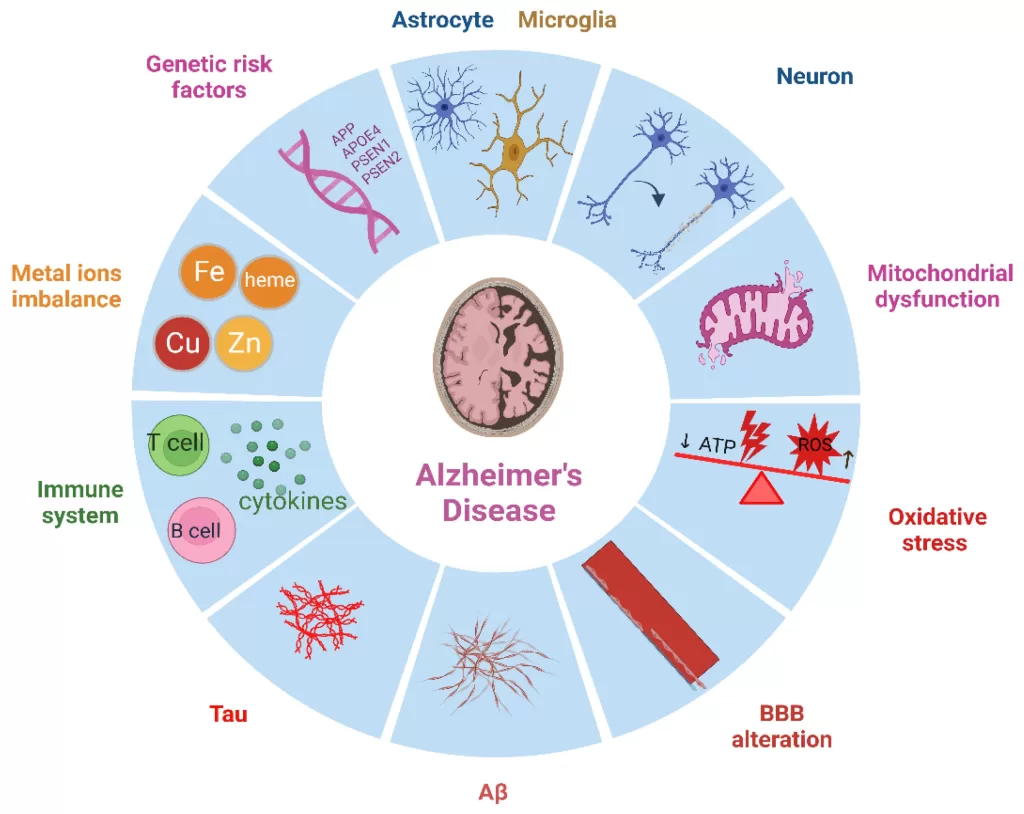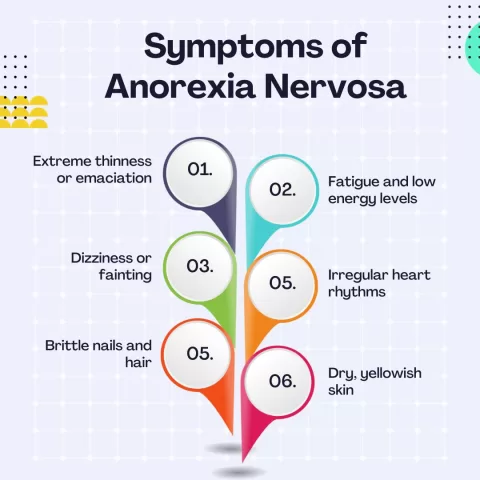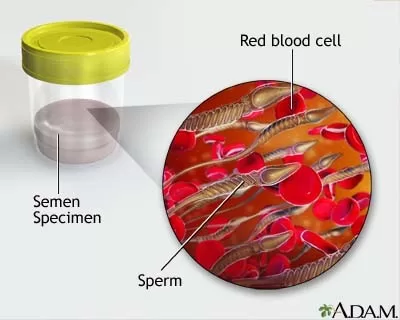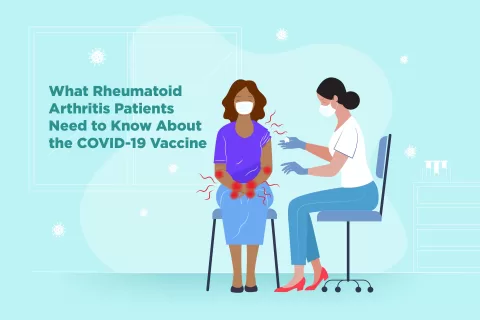In a groundbreaking study, researchers at UCLA have unveiled an innovative molecule, DDL-920, that has shown promising potential in reversing Alzheimer’s symptoms. This breakthrough molecule operates uniquely by revitalizing the brain’s memory circuits, and if successful in human trials, it could represent a significant advancement in treatment for Alzheimer’s disease. Unlike existing FDA-approved drugs that primarily target harmful plaques, DDL-920 aims to restore cognitive function and memory directly by enhancing gamma oscillations. With the ability to improve memory restoration, this new treatment could change the landscape of how we approach neurodegenerative diseases. As efforts to combat cognitive decline intensify, DDL-920 stands at the forefront, offering hope to millions affected by Alzheimer’s.
Researchers are exploring a remarkable new compound that has the potential to significantly alter the management of Alzheimer’s, referred to as DDL-920. This novel therapeutic agent aims to address the underlying issues associated with cognitive deterioration by enhancing electrical signals within the brain, thereby improving memory function. The innovative approach of this molecule sets it apart from conventional Alzheimer’s treatments, which primarily focus on plaque removal. As scientists delve deeper into the mechanisms of memory restoration and cognitive enhancement, the promise of DDL-920 illuminates a new path towards treating Alzheimer’s and related cognitive disorders. By harnessing the brain’s own capabilities, this treatment could fundamentally reshape our understanding of memory and its restoration.
Unveiling DDL-920: The Alzheimer’s Breakthrough Molecule
In the urgent pursuit of Alzheimer’s treatments, researchers have made a significant leap with the discovery of DDL-920, a breakthrough molecule that has shown promise in reversing the symptoms of Alzheimer’s disease. This novel compound works by rejuvenating the brain’s memory circuitry, demonstrating effects in mouse models that mimic typical Alzheimer’s symptoms. Unlike existing treatments that primarily focus on plaque removal, DDL-920 aims to rectify the underlying cognitive dysfunction by enhancing gamma oscillations, thereby possibly restoring memory functions.
The implications of DDL-920 are profound, as it represents a new class of treatment options that not only target cognitive decline but also actively seek to improve cognitive function. Dr. Istvan Mody, the study’s lead author, strongly emphasizes the uniqueness of DDL-920 compared to current medications available, which only slow disease progression. This innovative approach signals a potential shift in how we understand and treat Alzheimer’s disease, presenting new hope for millions affected.
Reversing Alzheimer’s Symptoms with Innovative Treatment
The ability of DDL-920 to reverse Alzheimer’s symptoms is rooted in its mechanism of action. This molecule interfaces with paravalbumin interneurons to facilitate stronger gamma oscillations. By antagonizing the chemical receptors that inhibit these oscillations, DDL-920 effectively ramps up the brain’s internal signaling to restore lost cognitive functions. This advancement is significant, as traditional treatments fail to address the core challenges posed by Alzheimer’s, which involves not just memory loss but also deteriorating cognition that impacts the quality of life.
Researchers conducted a thorough analysis using genetically modified mice that showcased Alzheimer’s symptoms. The improved performance of these mice in memory tests, after administration of DDL-920, suggests that the compound could lead to significant enhancements in both learning and memory retention. The dual findings of safety and efficacy exhibited in this study present a compelling case for further exploration of DDL-920 as a treatment for Alzheimer’s and possibly other conditions linked to cognitive decline.
Cognitive Function Restoration Through Molecular Discovery
Restoring cognitive function in Alzheimer’s patients has traditionally posed a significant challenge for scientists and clinicians alike. However, the mechanism of DDL-920 demonstrates that cognitive restoration may be achievable through targeted biochemical pathways. By enhancing gamma oscillations within the brain’s neural circuits, DDL-920 not only offers hope for memory restoration but lays the groundwork for developing more effective Alzheimer’s treatments in the future.
Dr. Mody’s innovative approach utilizes intrinsic brain processes to stimulate cognitive function rather than relying solely on external interventions. With DDL-920, researchers aim to recover the brain’s natural ability to process and retain information, thus addressing one of the most debilitating symptoms of Alzheimer’s. Should further studies confirm these findings in humans, it could revolutionize the current treatment landscape for Alzheimer’s and related cognitive disorders.
The Role of Gamma Oscillations in Memory Restoration
Gamma oscillations are critical for numerous cognitive functions, including memory encoding and retrieval. Researchers have found that these high-frequency brain waves play a pivotal role in orchestrating the circuits involved in memory and cognitive processing. DDL-920’s capacity to enhance these gamma oscillations marks a substantial advancement in understanding how we might restore lost cognitive abilities in Alzheimer’s patients.
This breakthrough has the potential not only to rehabilitate memory function but also to improve overall cognitive performance in individuals suffering from Alzheimer’s disease. By effectively flipping the switch in the brain that regulates gamma oscillations, DDL-920 could provide a crucial link in the chain of treatment options that aim to restore a semblance of normalcy to patients’ lives, allowing them to actively engage with their environment once more.
Comparative Analysis: DDL-920 vs. Existing Alzheimer’s Treatments
Current FDA-approved treatments for Alzheimer’s, such as lecanemab and aducanumab, focus on removing amyloid plaques from the brain. These treatments might slow cognitive decline but do not necessarily improve cognitive performance or memory recall. In contrast, DDL-920 introduces a radical alternative by targeting the underlying cognitive dysfunction instead of simply addressing the symptoms associated with amyloid buildup.
This comparative analysis highlights the unique position that DDL-920 holds in the Alzheimer’s treatment narrative. By attacking the issue at its root and aiming to restore cognitive faculties, DDL-920 presents a promising direction for future therapeutic strategies, fostering hope that true memory restoration might soon be possible for patients suffering from this debilitating disease.
Transformative Potential of DDL-920 for Other Cognitive Disorders
The implications of DDL-920 extend beyond Alzheimer’s treatments. Medical professionals and researchers are considering the compound’s potential application to other cognitive disorders characterized by diminished gamma oscillations. Conditions such as depression, schizophrenia, and specific autism spectrum disorders may also benefit from a therapy that targets these critical neural rhythms, offering hope for broader cognitive enhancement.
With DDL-920’s potential to not just slow cognitive decline but also restore memory and cognitive function, researchers are encouraged to further explore its versatility. If proven effective in additional cognitive impairments, DDL-920 could redefine treatment paradigms across several mental health issues, showcasing a new era in cognitive recovery therapies.
Safety and Efficacy in the Path Towards Human Trials
While the results from the study employing DDL-920 in mice are promising, researchers remain acutely aware of the need for extensive testing before human trials can commence. Ensuring the safety and efficacy of this breakthrough molecule is paramount, as researchers refine the compound’s potential treatments for Alzheimer’s and related conditions. Each step taken will involve rigorous scrutiny to ascertain the compound’s reliability in enhancing cognitive functions without adverse effects.
This thorough vetting process is crucial to translating preclinical success into real-world applications. As researchers, led by Dr. Mody, continue to push the boundaries of Alzheimer’s treatment through substances like DDL-920, the focus remains undeniably on not only achieving success in the laboratory but also safeguarding patient health during eventual human trials.
The Future of Alzheimer’s Treatment: Hope and Expectations
The discovery of DDL-920 heralds a new chapter in the quest to combat Alzheimer’s disease. By not just serving as a placeholder but actively working to restore cognitive function, this molecule reflects the growing realization that treatment must evolve from merely managing symptoms to actively reversing the degenerative processes associated with Alzheimer’s. Patients and caregivers alike can find solace in the notion that more effective treatments may soon be on the horizon.
As research progresses, the anticipation surrounding DDL-920 exemplifies the hope infused within the scientific community. Should subsequent trials yield favorable results, DDL-920 may set a new standard in the treatment landscape for Alzheimer’s disease, inspiring further innovations and breakthroughs that pave the way for enhanced cognitive recovery strategies. The journey towards reclaiming cognitive health is just beginning, and DDL-920 stands at the forefront.
A Novel Approach to Alzheimer’s: The Mechanism Behind DDL-920
Understanding the mechanism behind DDL-920’s action presents yet another layer of intrigue in the study of Alzheimer’s treatment. By directly addressing the neurotransmitter processes that underpin cognitive function, DDL-920 allows for a more tailored and potentially effective form of treatment. This nuanced approach contrasts sharply with the more traditional methods, which often take a broad stroke to manage symptoms and may overlook the significant bidirectional communication pathways in the brain.
The intentional targeting of paravalbumin interneurons is indicative of this molecule’s innovative design. By allowing these neurons to produce and sustain gamma oscillations more effectively, DDL-920 is forging a path to facilitate not just memory retention but also overall cognitive resilience. This diligence to understanding and addressing the core of cognitive decline exemplifies the evolution of treatment methodologies that align more closely with the brain’s natural functioning.
Frequently Asked Questions
What is the breakthrough molecule that reverses Alzheimer’s symptoms?
The breakthrough molecule identified by researchers at UCLA Health is called DDL-920. This compound has shown promise in restoring cognitive functions in mice exhibiting Alzheimer’s symptoms by jumpstarting the brain’s memory circuitry.
How does DDL-920 improve cognitive function in Alzheimer’s patients?
DDL-920 improves cognitive function by targeting paravalbumin interneurons in the brain that generate gamma oscillations. By antagonizing specific receptors that inhibit these gamma oscillations, DDL-920 allows for enhanced memory and cognitive function.
Is DDL-920 a treatment for Alzheimer’s disease?
Yes, DDL-920 is being researched as a potential treatment for Alzheimer’s disease. Unlike current FDA-approved drugs that only slow cognitive decline by removing plaques, DDL-920 aims to restore memory and cognitive functions.
What were the results of the DDL-920 study in Alzheimer’s model mice?
In the study, Alzheimer’s model mice treated with DDL-920 were able to recall the location of an escape hole in a maze, demonstrating memory restoration comparable to normal mice after two weeks of treatment.
How does DDL-920 differ from existing Alzheimer’s treatments?
Unlike existing treatments like lecanemab and aducanumab, which only remove plaques, DDL-920 works from within the brain to enhance gamma oscillations and restore cognitive abilities, representing a novel approach to treating Alzheimer’s.
What implications could DDL-920 have beyond Alzheimer’s treatment?
Beyond Alzheimer’s, DDL-920 may also have implications for treating other conditions associated with reduced gamma oscillations, such as depression, schizophrenia, and autism spectrum disorder.
What further research is needed for DDL-920?
Extensive further research and clinical trials are required to determine the safety and efficacy of DDL-920 in human subjects before it can be widely considered a treatment for Alzheimer’s disease.
How does DDL-920 affect memory restoration in Alzheimer’s patients?
DDL-920 promotes memory restoration by increasing the electrical rhythms in the brain that are crucial for memory formation and cognitive function, specifically through enhancing gamma oscillations in paravalbumin interneurons.
Can DDL-920 cause side effects in Alzheimer’s model mice?
In the study, Alzheimer’s model mice treated with DDL-920 showed no unusual behaviors, hyperactivity, or any visible side effects during the two-week treatment, suggesting a favorable safety profile.
What is the mechanism of action for DDL-920 in reversing Alzheimer’s symptoms?
DDL-920 exerts its effects by blocking certain chemical receptors in paravalbumin interneurons that function like brake pedals, thus promoting sustained gamma oscillations necessary for effective memory and cognitive functioning.
| Key Point | Details |
|---|---|
| Breakthrough Molecule | DDL-920 identified by UCLA researchers for reversing Alzheimer’s symptoms. |
| Cognitive Function Restoration | In mice, DDL-920 restored cognitive functions by jumpstarting the brain’s memory circuitry. |
| Mechanism Differentiation | DDL-920 operates differently from current FDA-approved drugs that remove plaques but do not restore memory. |
| Gamma Oscillations | The molecule targets paravalbumin interneurons to enhance gamma oscillations and support memory functions. |
| Testing Results | Alzheimer’s model mice administered DDL-920 showed comparable maze recall abilities to wild-type mice after treatment. |
| Future Research | Further research is needed to evaluate the drug’s safety and effectiveness in humans, potentially impacting other conditions related to gamma oscillation deficits. |
Summary
The newly identified Alzheimer’s breakthrough molecule, DDL-920, has shown promising results in reversing cognitive decline in Alzheimer’s model mice. If further studies confirm its safety and effectiveness, DDL-920 could lead to a revolutionary treatment option that not only mitigates symptoms of Alzheimer’s disease but may also have broader applications for conditions characterized by impaired gamma oscillations.
The content provided on this blog (e.g., symptom descriptions, health tips, or general advice) is for informational purposes only and is not a substitute for professional medical advice, diagnosis, or treatment. Always seek the guidance of your physician or other qualified healthcare provider with any questions you may have regarding a medical condition. Never disregard professional medical advice or delay seeking it because of something you have read on this website. If you believe you may have a medical emergency, call your doctor or emergency services immediately. Reliance on any information provided by this blog is solely at your own risk.








